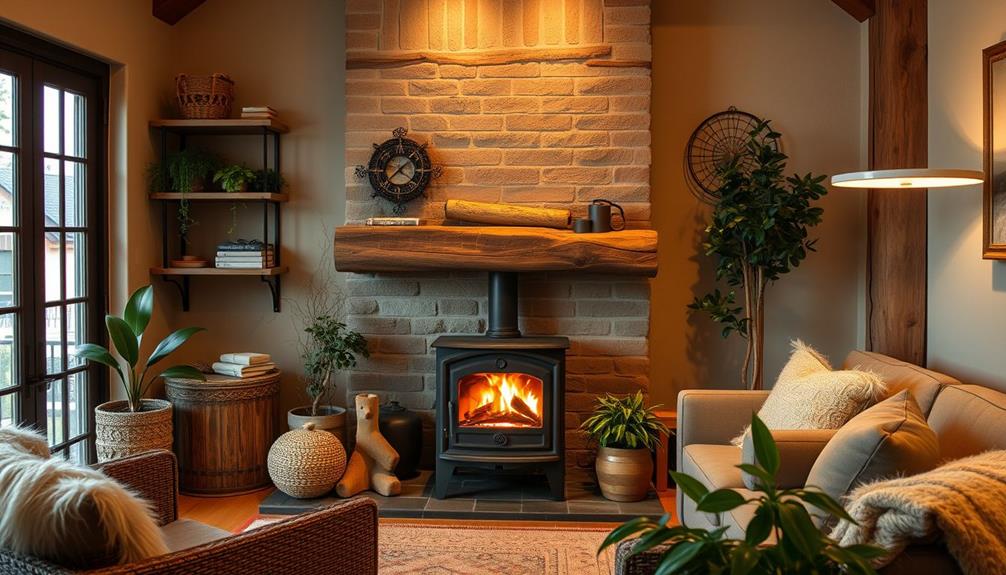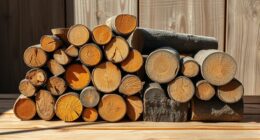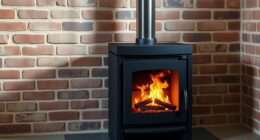As the flames dance and sway vibrantly within the wood stove, I find solace in the warmth they radiate.
In this guide, I’ll show you the ins and outs of running a wood stove, ensuring a cozy and efficient experience.
From essential safety precautions to selecting the right wood and controlling the burn rate, you’ll become a master of this timeless heating method.
So, let’s dive in and unlock the secrets to running a wood stove with confidence and ease.

Key Takeaways
- Safety precautions such as having a fire extinguisher nearby and wearing heat-resistant gloves are essential when running a wood stove.
- Properly choosing and storing wood, including keeping it well-ventilated, off the ground, and seasoned, is crucial for efficient and safe operation.
- Lighting the fire correctly, using a pyramid shape arrangement of kindling and monitoring the fire closely, is important for a successful burn.
- Controlling the burn rate by adjusting the damper and regulating airflow is necessary to maximize efficiency and heat control.
Safety Precautions
I should always remember to follow safety precautions when operating a wood stove. Safety equipment is essential to protect myself and others from potential hazards.
Firstly, I must ensure that I have a fire extinguisher nearby in case of emergencies.
Additionally, wearing heat-resistant gloves is crucial to prevent burns when handling hot materials.
Installing a carbon monoxide detector near the wood stove is imperative as wood stoves can produce carbon monoxide, a colorless and odorless gas that can be deadly if inhaled in high concentrations.
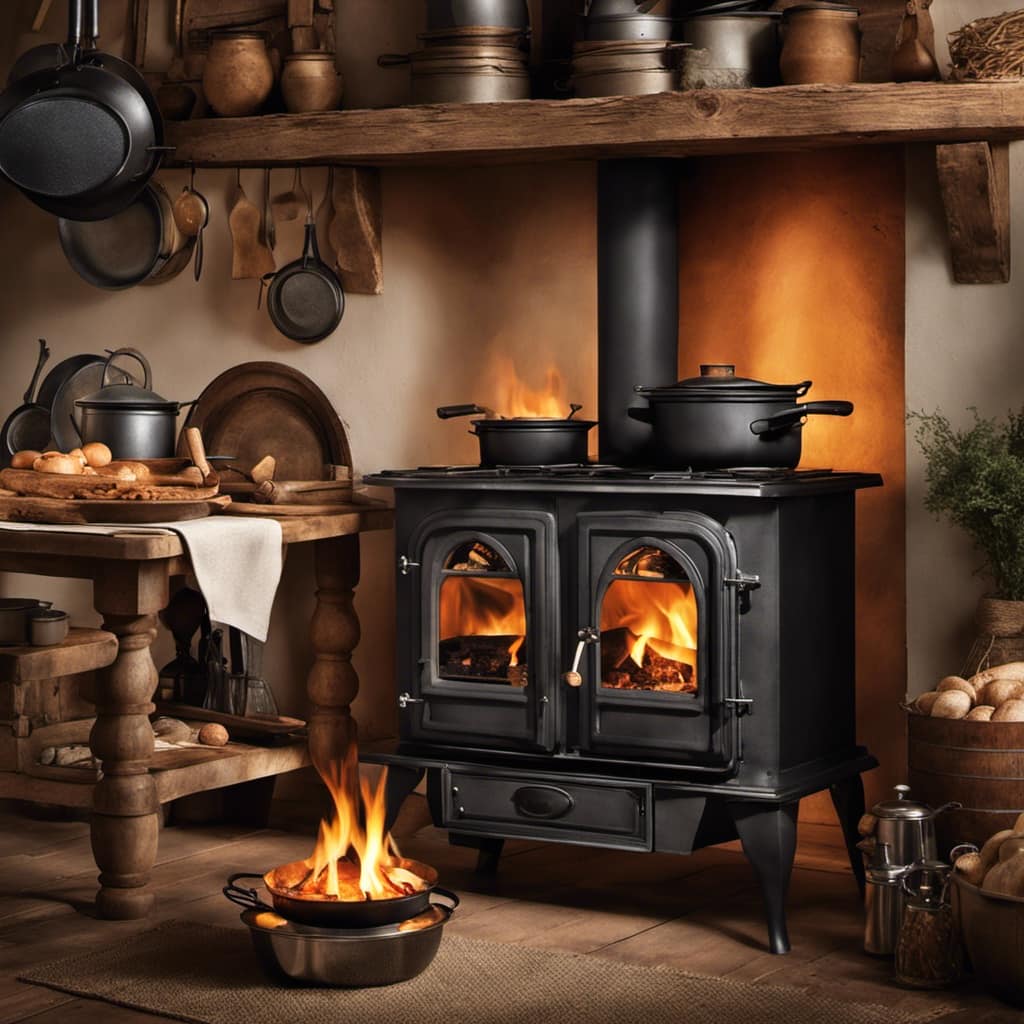
Regularly checking and cleaning the chimney is vital to prevent the buildup of creosote, which can pose a fire risk.
Lastly, keeping a safe distance from the stove and using a spark guard can prevent accidental burns and fires.
Choosing the Right Wood
To ensure optimal performance and efficiency, it’s important to select the right type of firewood for my wood stove. Proper wood storage and seasoning firewood are key factors in achieving this.
When it comes to proper wood storage, I make sure to keep my firewood stacked in a well-ventilated area, off the ground, and protected from rain or snow. This helps prevent moisture from seeping into the wood, which can make it difficult to ignite and create excessive smoke when burned.

Seasoning firewood is another crucial step. I allow the wood to dry for at least six months before using it in my wood stove. This process reduces the moisture content of the wood, making it burn more efficiently and produce less creosote buildup.
Now that the firewood is properly stored and seasoned, it’s time to move on to lighting the fire.
Lighting the Fire
Once the kindling is arranged in a pyramid shape, it’s important to carefully ignite it using a match or lighter. Before lighting the fire, ensure that the area around the stove is clear of any combustible materials. Make sure the damper is open to allow for proper airflow.
Once the fire is lit, monitor it closely to ensure it’s burning safely. Keep a fire extinguisher nearby in case of emergencies. If the fire is smoky, it may be an indication of poor airflow or damp wood. Adjust the damper or add more kindling to improve the burn.
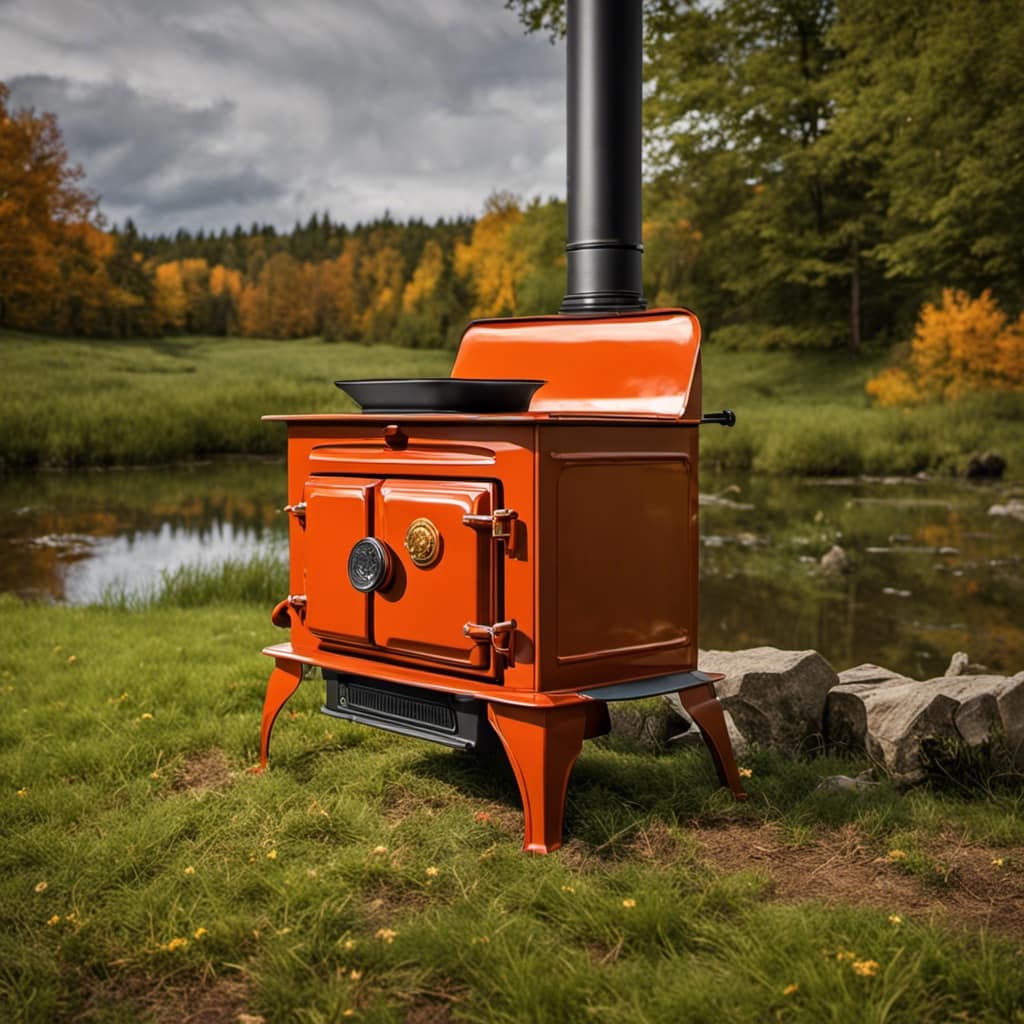
Remember to never leave the fire unattended and always practice proper fire safety.
Controlling the Burn Rate
Monitoring the airflow and adjusting the damper accordingly helps me control the burn rate of the fire. By regulating the amount of oxygen that enters the stove, I’m able to regulate the heat output and maximize efficiency.
The damper is a crucial component in this process, as it controls the airflow and determines the intensity of the fire. To increase the burn rate and heat output, I open the damper wider to allow more oxygen into the stove. Conversely, if I want to slow down the burn rate, I can partially close the damper to restrict the airflow. This level of control allows me to adjust the stove’s performance to suit my heating needs.
Now, let’s move on to the next section about cleaning and maintenance, which is essential for the stove’s longevity and efficiency.
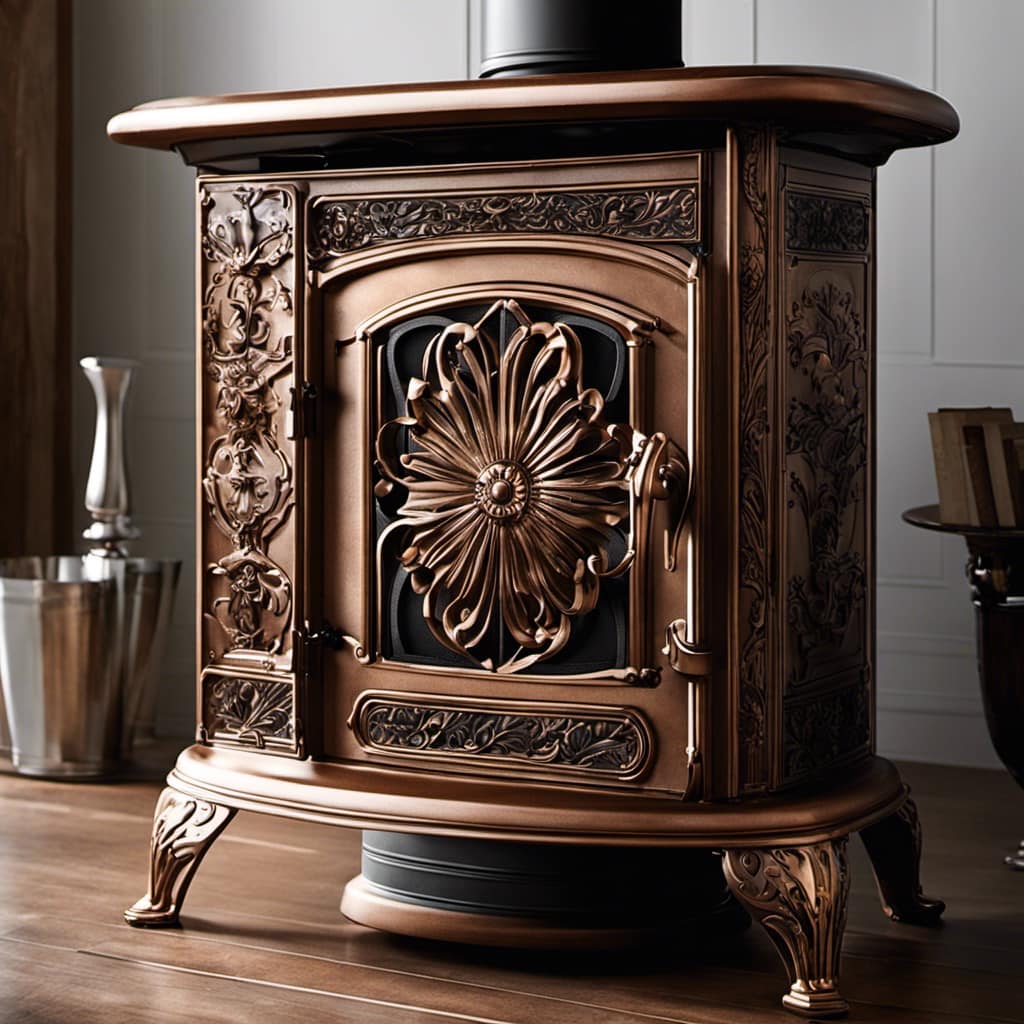
Can I Use My Wood Stove for Both Heating and Cooking?
Yes, you can use your wood stove for both heating and cooking. There are many resources online, including cooking on wood stove videos, that can provide tips and recipes for cooking on a wood stove. With proper precautions and knowledge, using a wood stove for cooking can be a versatile and efficient option.
Cleaning and Maintenance
When cleaning and maintaining my stove, I focus on removing any built-up ash and debris to ensure optimal performance.
One important aspect of maintenance is chimney cleaning. Over time, soot and creosote can accumulate in the chimney, leading to reduced airflow and increased risk of chimney fires. To clean the chimney, I use a chimney brush and extendable rod to scrub away the debris. It’s crucial to wear protective goggles and a dust mask during this process to prevent any particles from entering my eyes or lungs.
Another essential aspect of stove maintenance is ash disposal. I wait until the ash has cooled completely before removing it from the stove. Using a metal ash shovel, I carefully scoop out the ash and dispose of it in a metal container, away from any combustible materials.
Regular cleaning and maintenance ensure that my stove operates efficiently and safely.
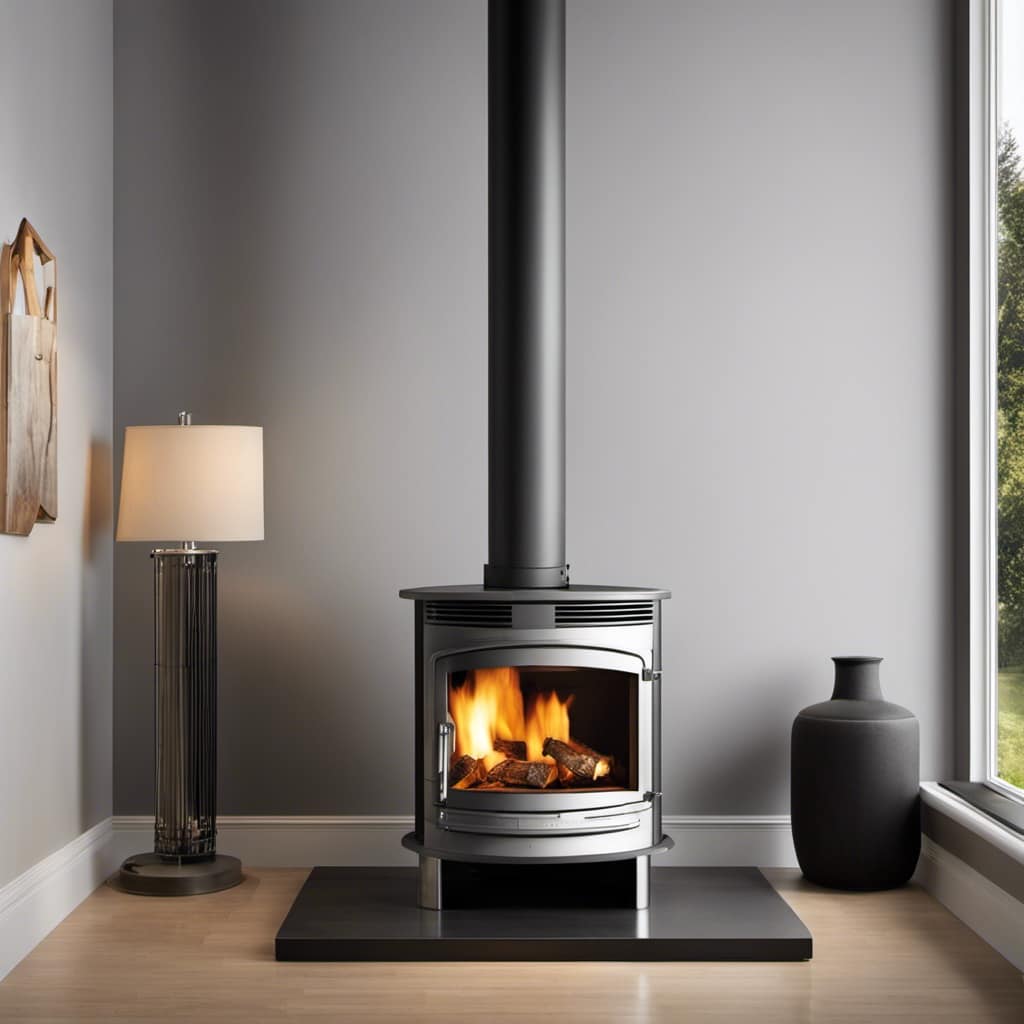
Frequently Asked Questions
How Do I Properly Season Firewood for My Wood Stove?
To properly season firewood for a wood stove, follow these best practices for stacking and storing: 1) Stack the wood in a single row, allowing for airflow. 2) Store the wood in a dry, well-ventilated area for at least 6-12 months.
What Are Some Common Mistakes to Avoid When Operating a Wood Stove?
When operating a wood stove, it’s crucial to avoid common mistakes. Improper airflow management can lead to inefficient burning, while using wet or unseasoned firewood can create excess smoke and lower heat output.
How Can I Prevent Creosote Buildup in My Chimney?
To prevent creosote buildup in my chimney, I ensure regular chimney cleaning and creosote removal. This involves removing any debris or obstructions, inspecting for damage, and using proper burning techniques to minimize creosote formation.
Can I Use Softwood in My Wood Stove?
Using softwood in a wood stove can lead to faster creosote buildup and less efficient burning. Hardwood, on the other hand, burns longer and produces more heat. Properly storing firewood is crucial for optimal burning efficiency.
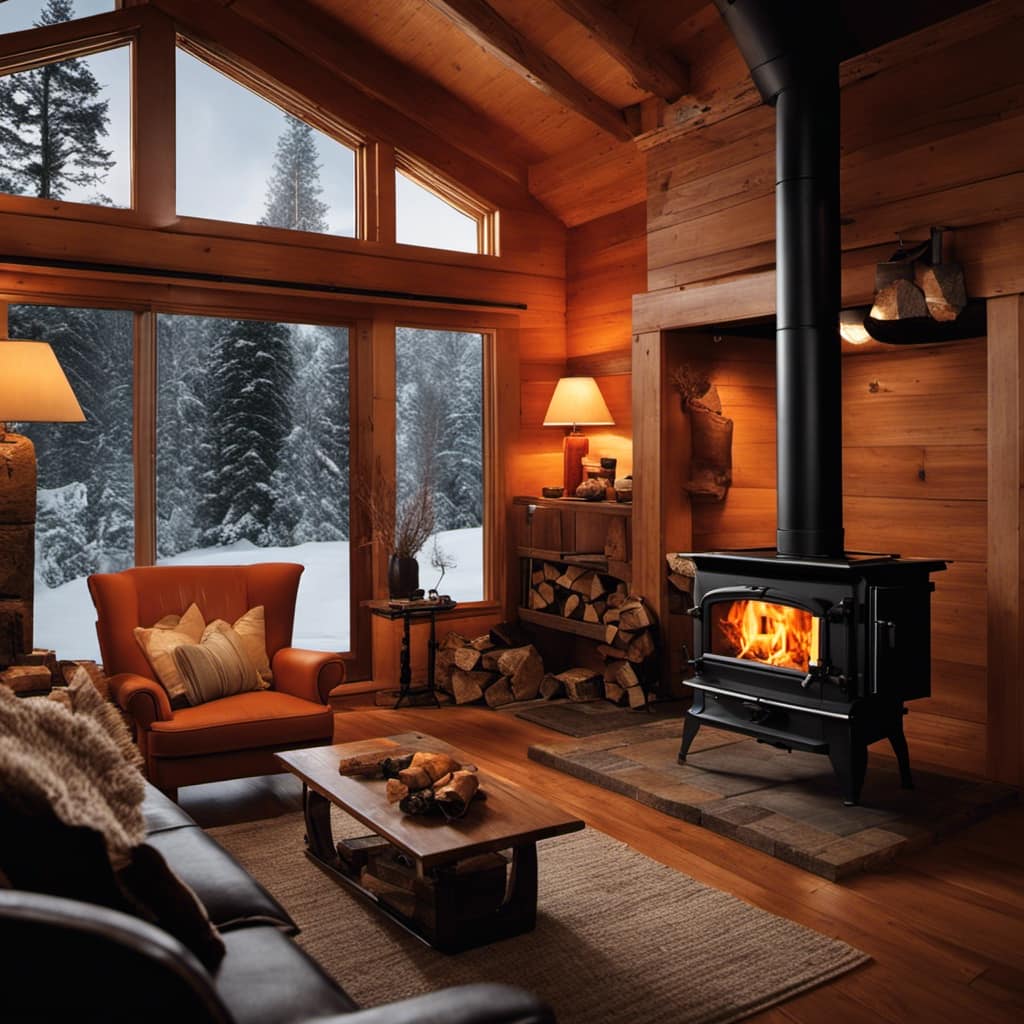
What Are Some Signs That My Wood Stove Needs Repairs or Servicing?
Some signs of wood stove problems include difficulty in starting a fire, excessive smoke or soot buildup, and irregular burning patterns. Regular maintenance is crucial to prevent these issues and ensure optimal stove performance.
Conclusion
In conclusion, running a wood stove requires careful attention to safety precautions, proper wood selection, and effective fire management.
By following these guidelines, you can create a warm and cozy atmosphere while ensuring the longevity and efficiency of your wood stove.
Remember to clean and maintain your stove regularly to prevent any potential hazards.
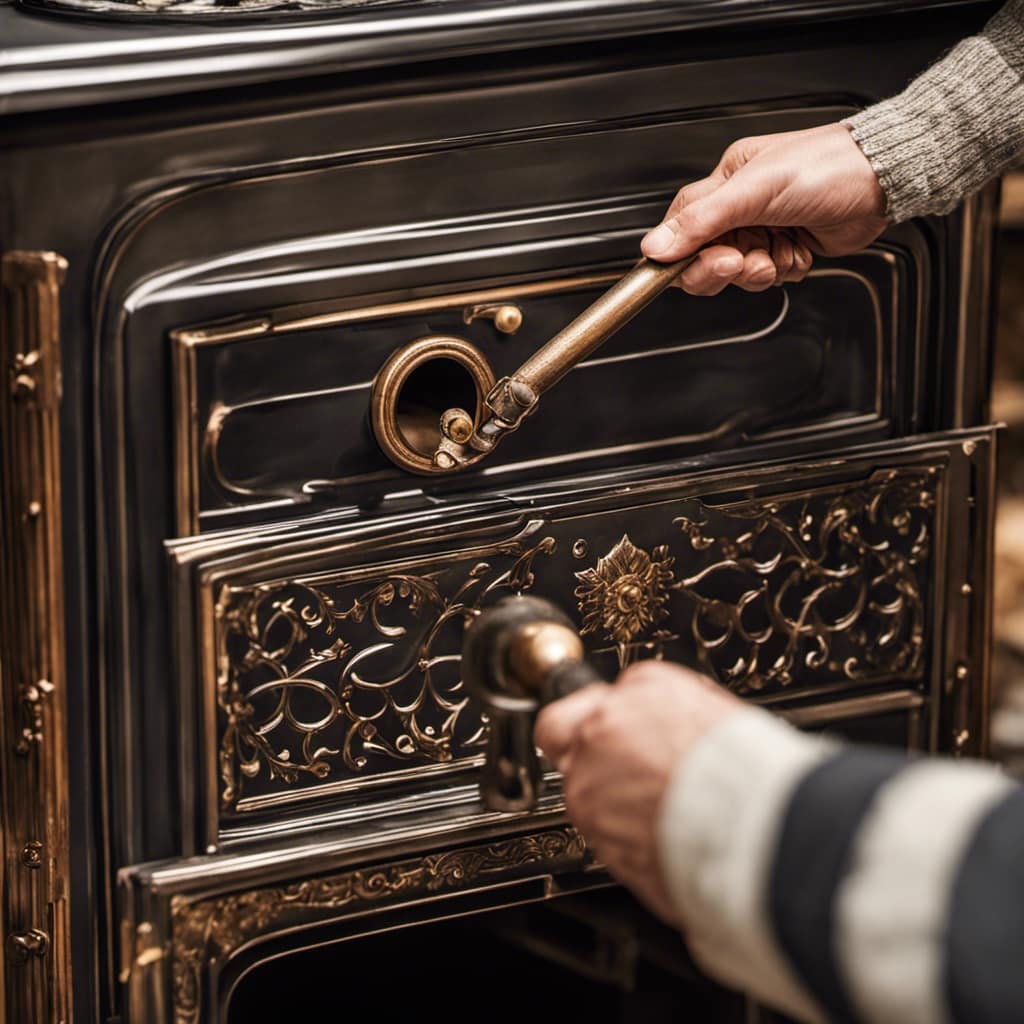
Embrace the comforting crackle of the fire and enjoy the natural warmth and ambiance it brings to your home.
Growing up surrounded by the vast beauty of nature, Sierra was always drawn to the call of the wild. While others sought the comfort of the familiar, she ventured out, embracing the unpredictable and finding stories in the heartbeat of nature.
At the epicenter of every remarkable venture lies a dynamic team—a fusion of diverse talents, visions, and passions. The essence of Best Small Wood Stoves is crafted and refined by such a trio: Sierra, Logan, and Terra. Their collective expertise has transformed the platform into a leading authority on small wood stoves, radiating warmth and knowledge in equal measure.




